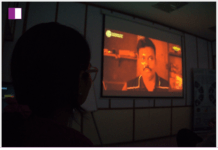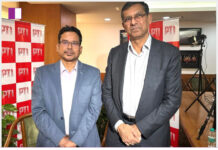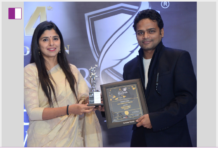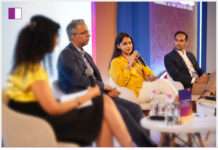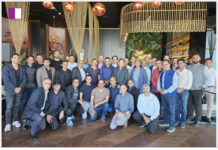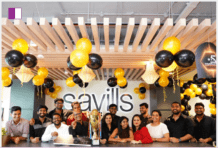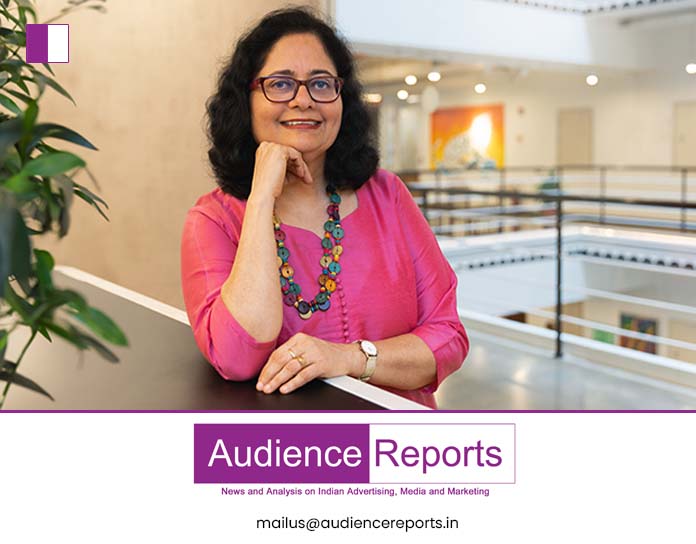HR veteran and the former Chief Talent Officer of WT South Asia, Roopa Badrinath, recently launched Turmeric Consulting, a Diversity, Equity, and Inclusion (DEI) consultancy. In this article, she writes that the A&M industry should be mindful of inadvertent identity-based stereotyping, blind spots, or unconscious biases at the workplace and in campaigns
India has always been a land of diversity, with its constitution recognising 22 official languages, not to mention the hundreds of other languages and dialects that are also spoken. It is popularly said that the language and culture across the country can change every 50 to 100 kilometres, with every state having its own dominant language, dialects, cuisines, and cultures.
While diversity is a given in a country like India, we still see a lack of representation of this multiplicity across the political arena, corporate sector, and in advertising and entertainment. Some of the common strands of diversity are gender, religion, age, abilities, sexual orientation, geographical location, socioeconomic status, etc.
As employers, a diverse employee population benefits the organisation, clients, and consumers they serve. Historically, the advertising and media (A&M) industry has played a significant role in influencing popular culture by shaping perceptions and behaviours. As a result, it becomes incumbent on these organisations to follow intentionality in representing historically under-represented communities, both from the point of view of recruitment and retention of such talent as employers and their authentic and positive representation in advertisements.
All organisations, irrespective of the product or service they deliver, are focused on increasing customer acquisition, retention, loyalty, and engagement, leading to business growth. Customer journeys and customer experience (CX) are always at the centre of such brand strategies.
It will be interesting to see if the same attention is paid to the employee journeys and employee experience (EX) of the brand custodian organisations (both on the client side as well as the agency side) that work on such brands.
In order to deliver a superior customer experience, brand custodians need to have a diverse workforce with a superior employee experience themselves. They need to have representation at their end to be able to deliver the desired customer experience to a diverse group of consumers. For example, do we have representation from different strands of diversity in the brand custodianship teams to create authentic and relatable customer journeys, user interfaces, and user experiences?
More often than not, the lack of representation or improper representation in the ads is due to deep-rooted unconscious biases at multiple touch points. Hence, it becomes imperative for all the creators and delivery platforms involved in the creation process (clients and marketers, creative, media, MR, data and analytics agencies, production houses, and media houses, to name a few) to look at the various points of creation for any inadvertent identity-based stereotyping, blind spots, or unconscious biases that have crept in.
Are we ensuring that a diverse and nuanced consumer base is being considered when arriving at the marketing and communication strategy for a brand? A base that is a true and authentic representative of the consumers we wish to serve.
Do we have a diverse set of vendors/suppliers who give teeth to the supply-chain or procurement process of the organisation? Do we insist that the vendors/suppliers understand the organisation’s commitment to Diversity, Equity, Inclusion (DEI) while requesting for RFPs and which will have an impact on the final output?
Are we ensuring that the teams working on the creation process are diverse and representative of the consumer segment being addressed?
Are we checking if certain historically excluded groups are being overlooked due to overzealous brand safety guidelines? Can we make it more inclusive and, at the same time, protect the brand?
Are we ready to place our ads with non-traditional media suppliers who have a more diverse and inclusive voice? Are media plans considering the reality of the current world we live in, which seeks a media ecosystem that is diverse and inclusive?
Are we considering the positive impacts of a circular economy while recommending solutions to our clients on packaging? Are we looking at marketing and communication being part of the solution through changed consumption and usage behaviours?
The talent, business and social justice case for diverse representation
While the social justice case for increasing representation across the multiple diversity strands can in itself be a strong and irrefutable argument, DEI has a decision-making significant business impact on enterprises. There are multiple reports which speak about the benefits of DEI. An organisation which is diverse, equitable and inclusive thrives with diversity of thought, stronger decision-making, innovation in products and services, better collaboration, reduced attrition, attracting high calibre talent, increased customer satisfaction, and increased employee engagement and loyalty. All of these have a direct impact on the top-line, margins and profitability of the organization. A report by Catalyst also states that mixed-gender boards have fewer instances of fraud, stronger Environmental, Social, and Governance (ESG) performance and can help organizations thrive during economic recessions.
Under-represented groups, like women, LGBTQ, People with Disabilities (PwDs) and others, represent a significant consumer base, and they look up to brands for products and services that cater to their unique needs and a positive representation of their identities.
Out of the 1.4 billion people of India, women comprise 48%. The 7th edition of Deloitte’s Global Women in the Boardroom report states that women hold 17.1% of the board seats in India. This has been possible to a large extent due to the mandate of The Companies Act, 2013 to have at least one woman board member. As per an EY report, the number of non-executive women board members is at 21%, compared to 7% of women board members in executive positions. This is a clear indication of the paucity of senior female leaders in executive positions across organisations. We’re missing out on making huge economic strides, as indicated by a McKinsey Global Institute report, estimating that India could add US$ 770 billion to its GDP by 2025—just by offering equal opportunities to women. Yet, the present contribution of women to the GDP remains at 18%.
As if this weren’t enough, according to the LeanIn.Org and McKinsey Institute’s ‘Women in the workplace 2022’ report, women leaders are leaving their companies at a higher rate. 48% of the women left organisations as they did not have enough opportunities to advance in their companies. What is extremely important for the industry to remember is that the factors driving women leaders to switch jobs are also extremely important for young women. They are watching how senior women leaders are being treated, to decide their future in the organisation.
Further, the report also highlights the fact that as men advance, they do less household labour, while women do not have that luxury. 13% of male senior managers and a whopping 52% of female senior managers and above are responsible for most or all of their family’s housework and/or childcare. Are organisations keeping their ears to the ground on such data to make their policies more equitable to ensure that they do not contribute to the broken rung?
On the women’s representation front, a perfunctory look at the senior management of leading organisations in the A&M industry shows women’s representation at around 24%. The numbers drop further when it comes to the C-suite.
Enough and more has already been said about the female economy, and it has been estimated that they control or influence around 85% of household spending. It has been acknowledged that women drive the majority of consumer spending through a combination of buying power and influence. How is this being reflected in advertisements? Are we talking to women through the ads in certain categories that have historically been considered male-driven? Are we showing women positively in aspirational roles? This has an impact on the future generation of women as ‘we become more of what we see’. Are we looking at the intersectionality of multiple identities among people?
According to an Aon NASSCOM report from June 2023, among the Indian population, 2.21% (around 31 million) have a disability, and an estimated 15% identify as LGBTQIA+ (over 200 million). Pink money, which is the world’s LGBTQ annual spending power, currently stands at $3.9 trillion and continues to grow, according to research from LGBT Capital. These are huge numbers from the point of view of filling the skills shortage, in addition to being a consumer base for brands if only they could tap into their unique needs. Further, inclusion of these identities in our brand plans with positive representation will not only win their loyalty and engagement; it will also deliver a bonus of an additional segment of loyal consumers in the form of their family and friends.
Now let us look at the millennial population. As per the World Economic Forum, by the year 2025, 75% of the global workforce will be made up of millennials. This group will occupy the majority of leadership roles over the coming decades. They will be responsible for making important decisions that affect workplace cultures and people’s lives. This group has a strong sense of purpose and has unique perspectives on DEI. They believe that a diverse and inclusive workplace is more innovative and creative and are more likely to look at an organisation’s DEI and ESG commitments before deciding to take up a job.
Now add to this equation the anxiety of Gen Zs and millennials with respect to climate change. As per Deloitte’s 2023 Gen Z and Millennial Survey (India), Indian Gen Zs and millennials are showing higher levels of climate concern than their global counterparts, and are more willing to pay higher prices for sustainable products or services. To reduce their environmental impact, Indian Gen Zs and millennials are eating vegetarian/vegan diets, avoiding fast fashion, making their homes more energy efficient, and researching companies before purchasing from them.
The recently released BBDO report indicates that 65% of consumers in India are in favour of brands that are doing good for society or the planet. Are we being inclusive and listening to this demographic when we are creating advertisements whose impressions online and offline can leave a heavy carbon footprint? Are we catering to their strong sense of purpose and social justice by ensuring that the representation of historically underrepresented groups in ads and in our media placements is not tokenistic but authentic?
Kantar’s Media Reactions Study indicates that consumers take notice of the good intentions of brands and have also noted that the representation of various identities needs improvement. Clearly, a lot of work needs to be done, and the industry needs to rise to the challenge. The change can begin by the industry focusing on improving representation, like any other critical business goal, as it helps mitigate business risks and strengthens the industry as a whole.








